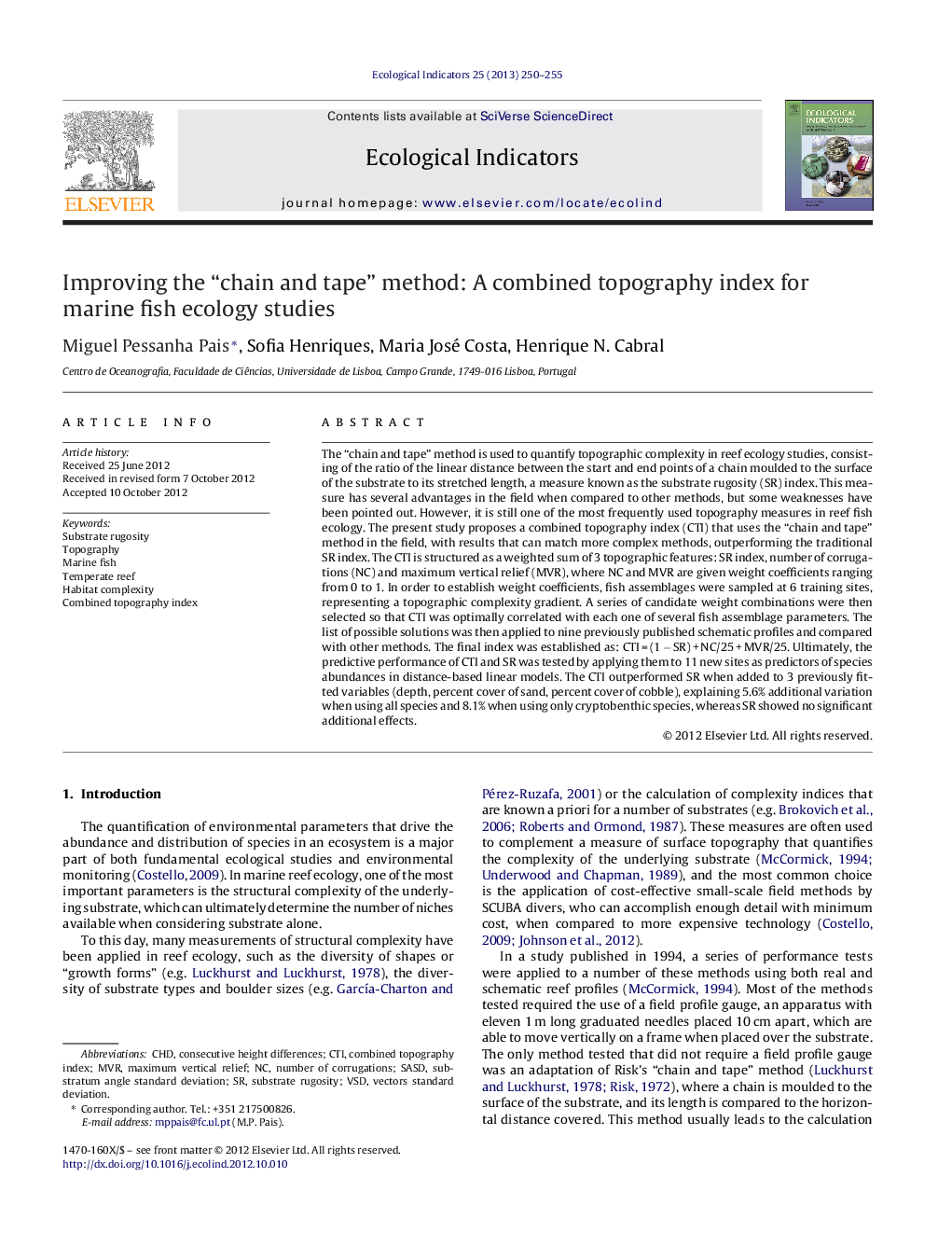| Article ID | Journal | Published Year | Pages | File Type |
|---|---|---|---|---|
| 4373607 | Ecological Indicators | 2013 | 6 Pages |
The “chain and tape” method is used to quantify topographic complexity in reef ecology studies, consisting of the ratio of the linear distance between the start and end points of a chain moulded to the surface of the substrate to its stretched length, a measure known as the substrate rugosity (SR) index. This measure has several advantages in the field when compared to other methods, but some weaknesses have been pointed out. However, it is still one of the most frequently used topography measures in reef fish ecology. The present study proposes a combined topography index (CTI) that uses the “chain and tape” method in the field, with results that can match more complex methods, outperforming the traditional SR index. The CTI is structured as a weighted sum of 3 topographic features: SR index, number of corrugations (NC) and maximum vertical relief (MVR), where NC and MVR are given weight coefficients ranging from 0 to 1. In order to establish weight coefficients, fish assemblages were sampled at 6 training sites, representing a topographic complexity gradient. A series of candidate weight combinations were then selected so that CTI was optimally correlated with each one of several fish assemblage parameters. The list of possible solutions was then applied to nine previously published schematic profiles and compared with other methods. The final index was established as: CTI = (1 − SR) + NC/25 + MVR/25. Ultimately, the predictive performance of CTI and SR was tested by applying them to 11 new sites as predictors of species abundances in distance-based linear models. The CTI outperformed SR when added to 3 previously fitted variables (depth, percent cover of sand, percent cover of cobble), explaining 5.6% additional variation when using all species and 8.1% when using only cryptobenthic species, whereas SR showed no significant additional effects.
► The “chain and tape” method is used to measure rugosity in reef fish ecology. ► Despite its advantages in the field, the resulting rugosity index has limitations. ► A new topography index that applies the “chain and tape” method is proposed. ► The index was optimised using reef fish assemblages and schematic profiles. ► The proposed index outperformed the rugosity index when modelling test data.
